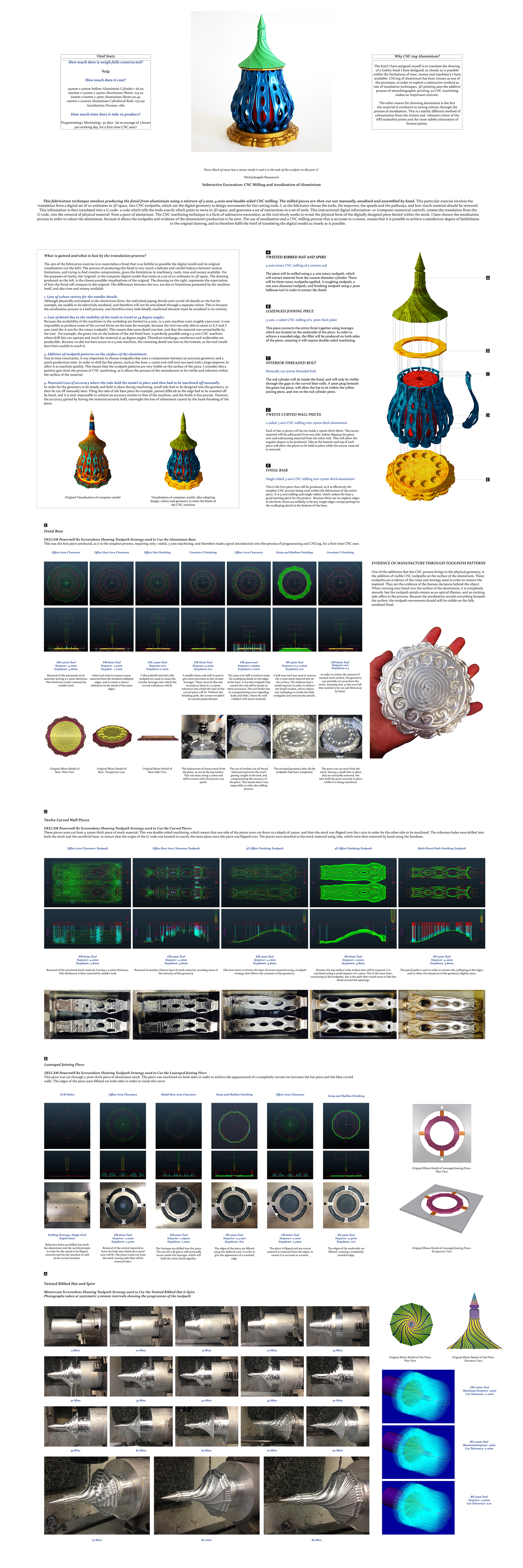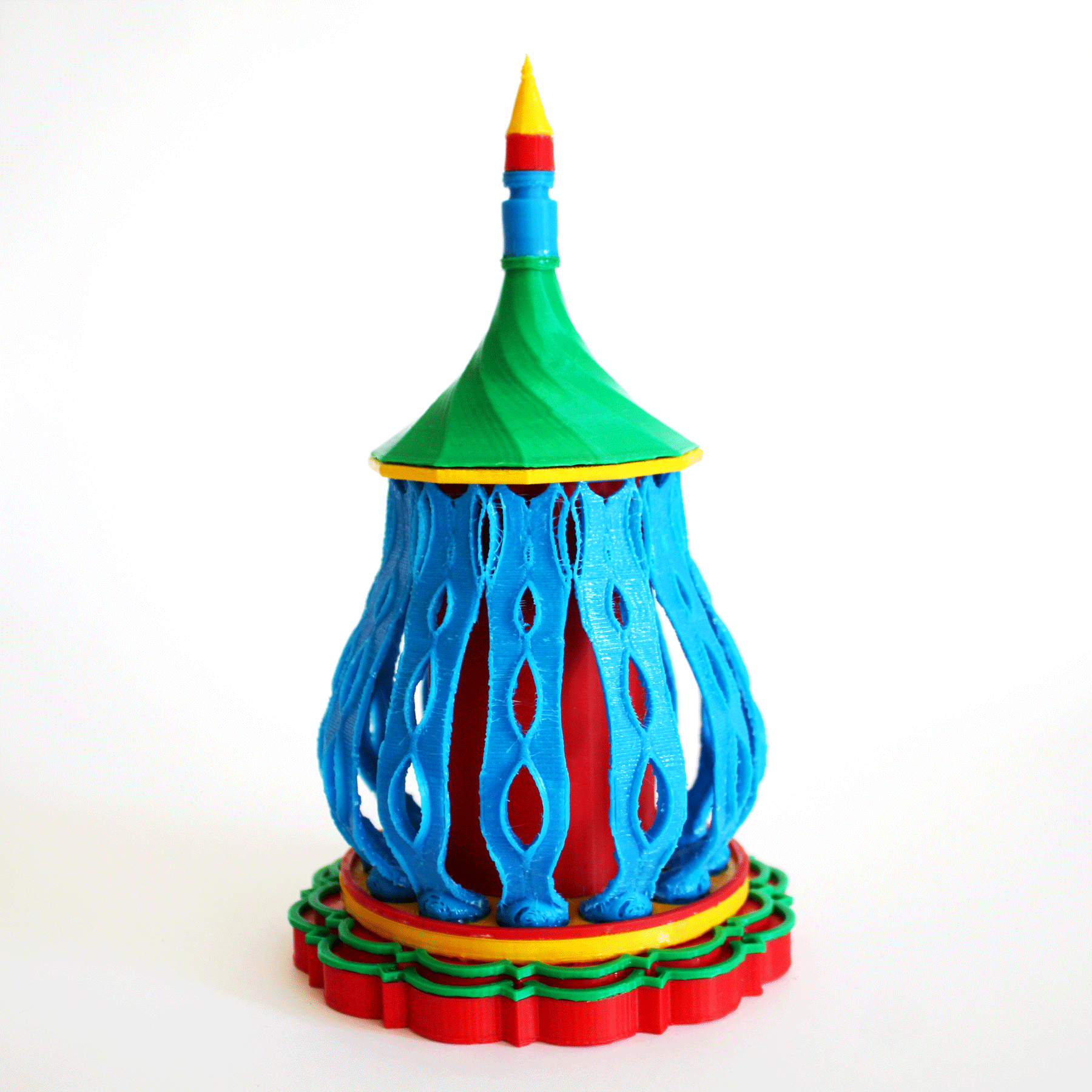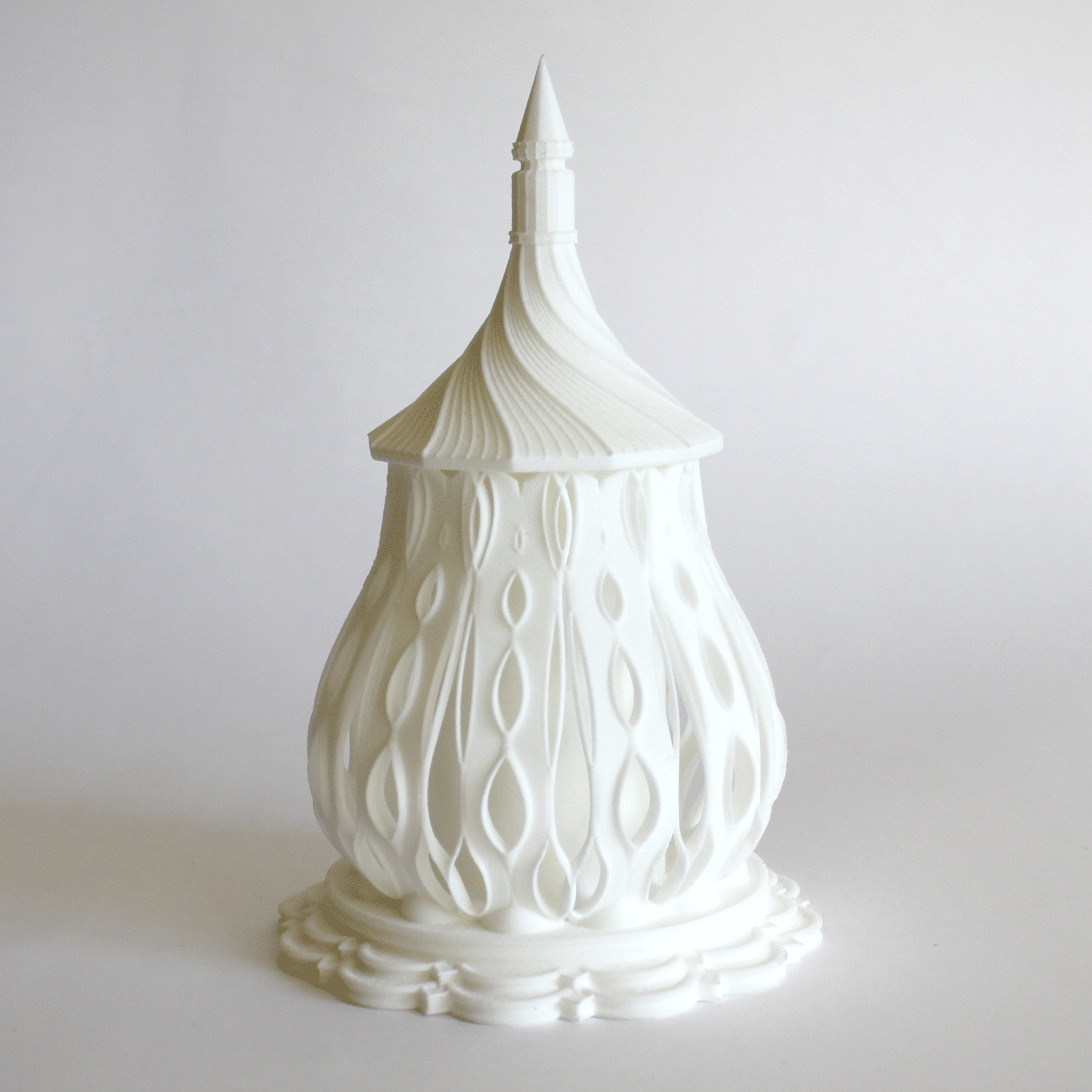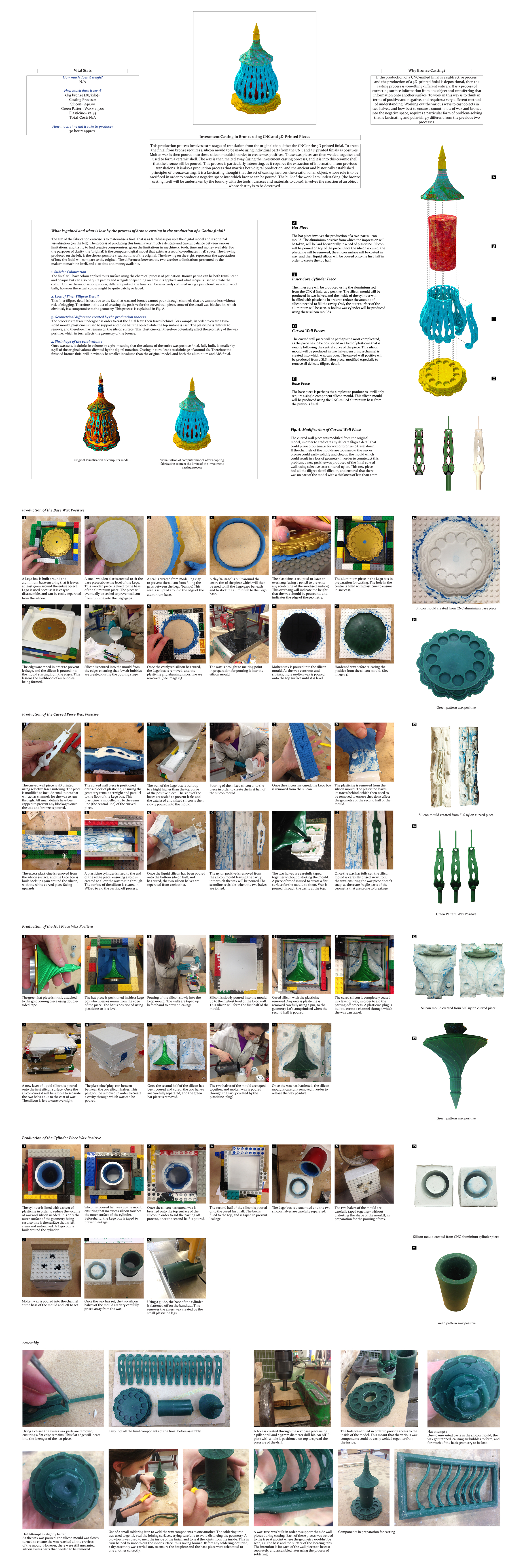21st Century Gothic Finials
2014 - 2015The exercise celebrates the decision-making processes that have an effect on the physical manifestation of a translation.
Despite originating from the same digital model, each of the ornaments opposite differ wildly from each other. These differences are a celebration of the complexities of the digital and analogue methods of craft that can each be used in order to physically realise a digital notation.
The exercise is an attempt to inhabit the world of the project, and to experience the learning process and activities of the inhabitants of the building. Prior to this exercise, I had no experience in casting, CNC milling or 3D printing, so the project was undertaken to highlight the process of teaching and learning from a zero knowledge starting point. No craft is undertaken in isolation and each activity is the result of collaboration and the passing of knowledge from one person to another.
The finials are each produced using a combination of digital and analogue techniques. Decisions are made at the interface of the material, or in some cases (such as CNC milling), using foresight. Most importantly, each of the production methods have differing attitudes towards the production of form (whether subtractive, depositional or hybrid). They also each exhibit a different attitude towards the application of colour, if they are conducive to being polychromatic at all.
 Anodised aluminium finial produced by a
Anodised aluminium finial produced by a mixture of 3 and 4-axis CNC milling


 ABS finial produced by depositional extrusion
ABS finial produced by depositional extrusion of filament onto a heated bed

 Nylon finial produced by selective laser sintering
Nylon finial produced by selective laser sintering
